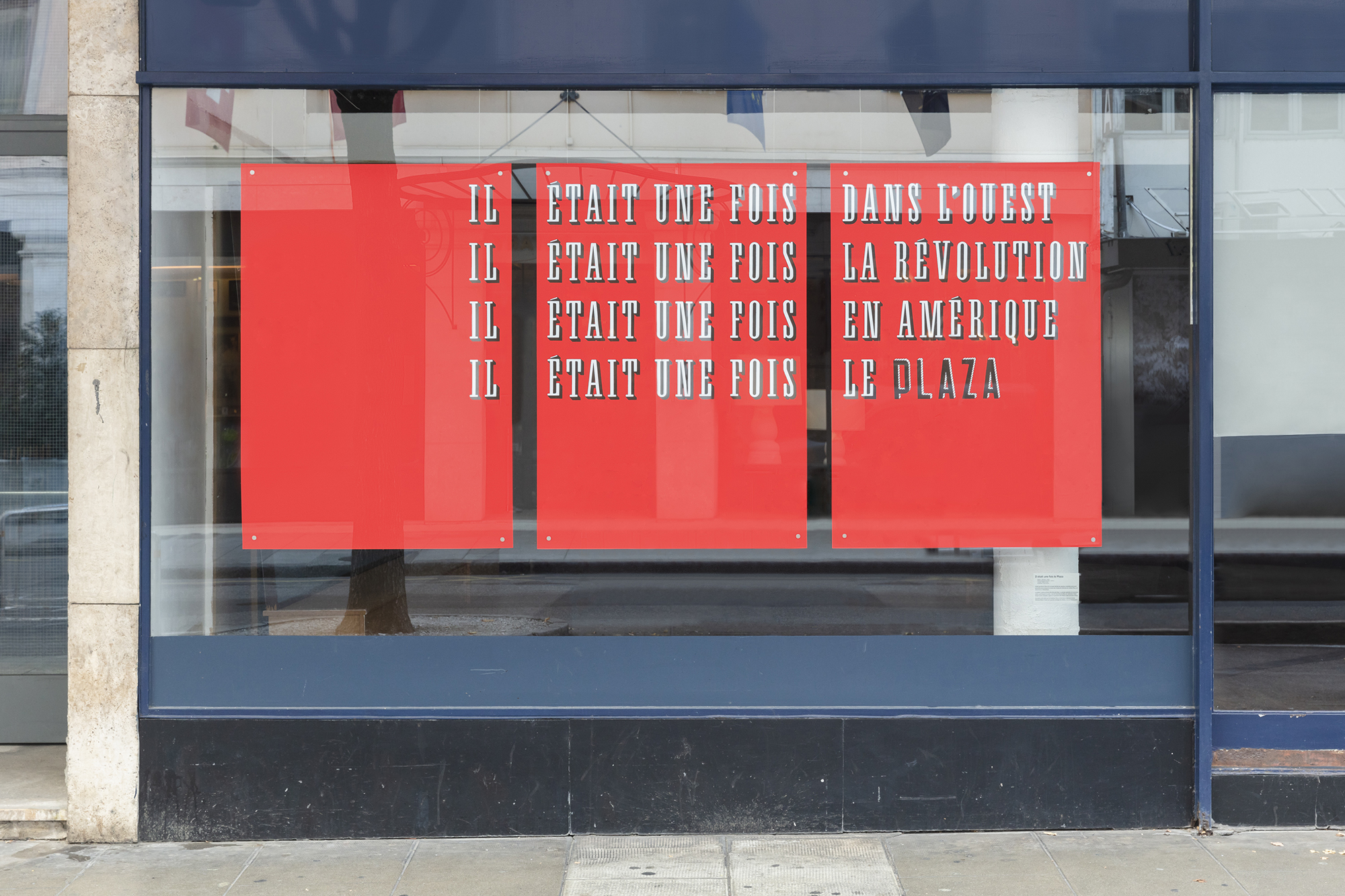
IL ÉTAIT UNE FOIS LE PLAZA
Fabienne Radi & Clovis Duran
Il était une fois le Plaza (Once upon a time there was the Plaza…) is a project of silk-screened posters imagined by the artist Fabienne Radi and the graphic designer Clovis Duran, unfolding like a show over three seasons composed of several episodes. The posters are based entirely on the 890 films shown at the Plaza since it opened in 1952. The images are organized on a kind of Split Screen template, following the process that had its moment of glory in the 1960s thanks to the invention of the Cinemascope.
Season 2
The second Season is composed of 5 episodes with names of cinema personalities. The names are written in homophonic translation with words in French. You have to read them aloud to understand them. A process often used in the poetry of Victor Hugo, the poet objectivist Louis Zukofsky, the Oulipo group and practiced here between two languages. The colored form in which the names are inserted corresponds to the sound wave they produce when pronounced. The wave has been compressed and inverted vertically.
EPISODE 4 (Season 2)
Episode 4 features three women directors (one American, one French and one New Zealander) whose films have been filling theaters for the past twenty years.
SAUF YACK HOP HOLA (Sofia Coppola)
MAILLE OUAIS NŒUD (Maïwenn)
GÊNE QUAND PION (Jane Campion)
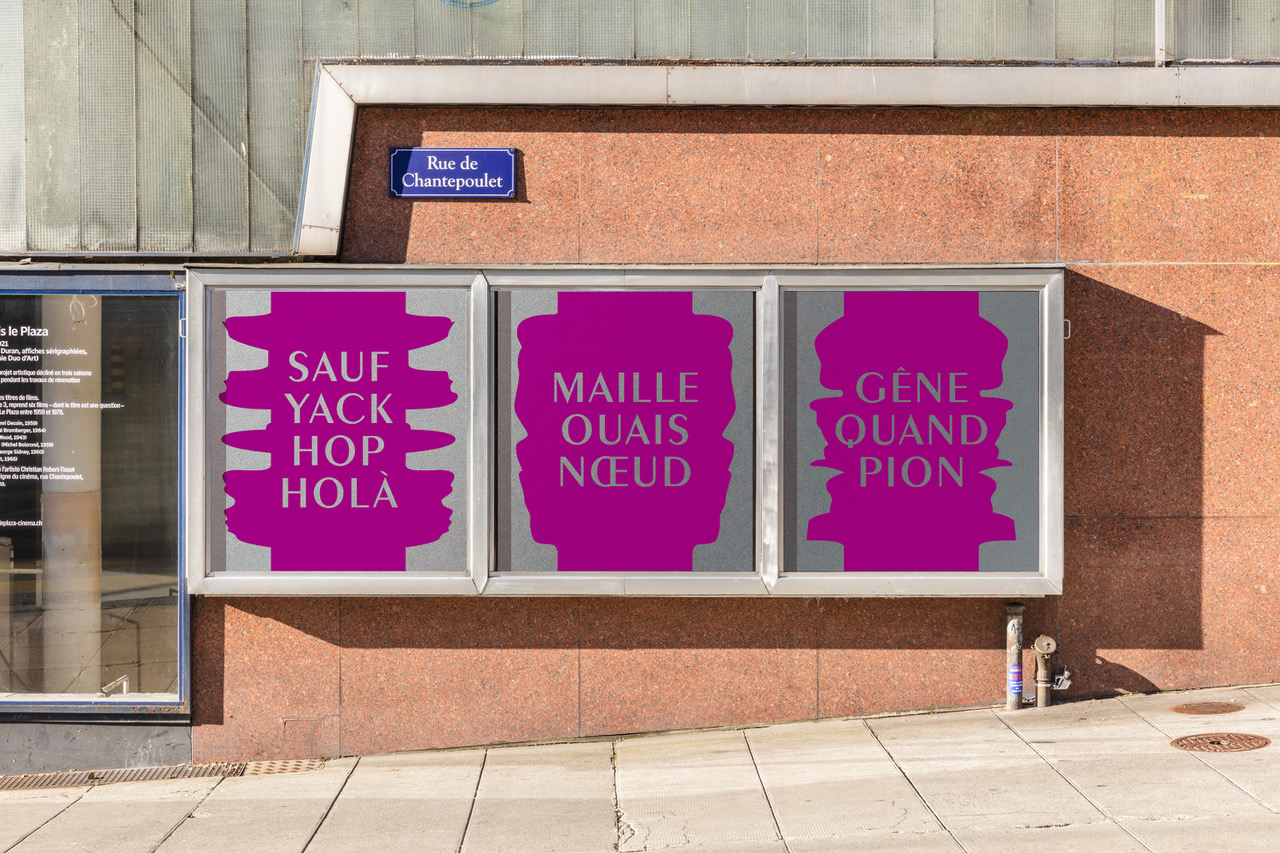
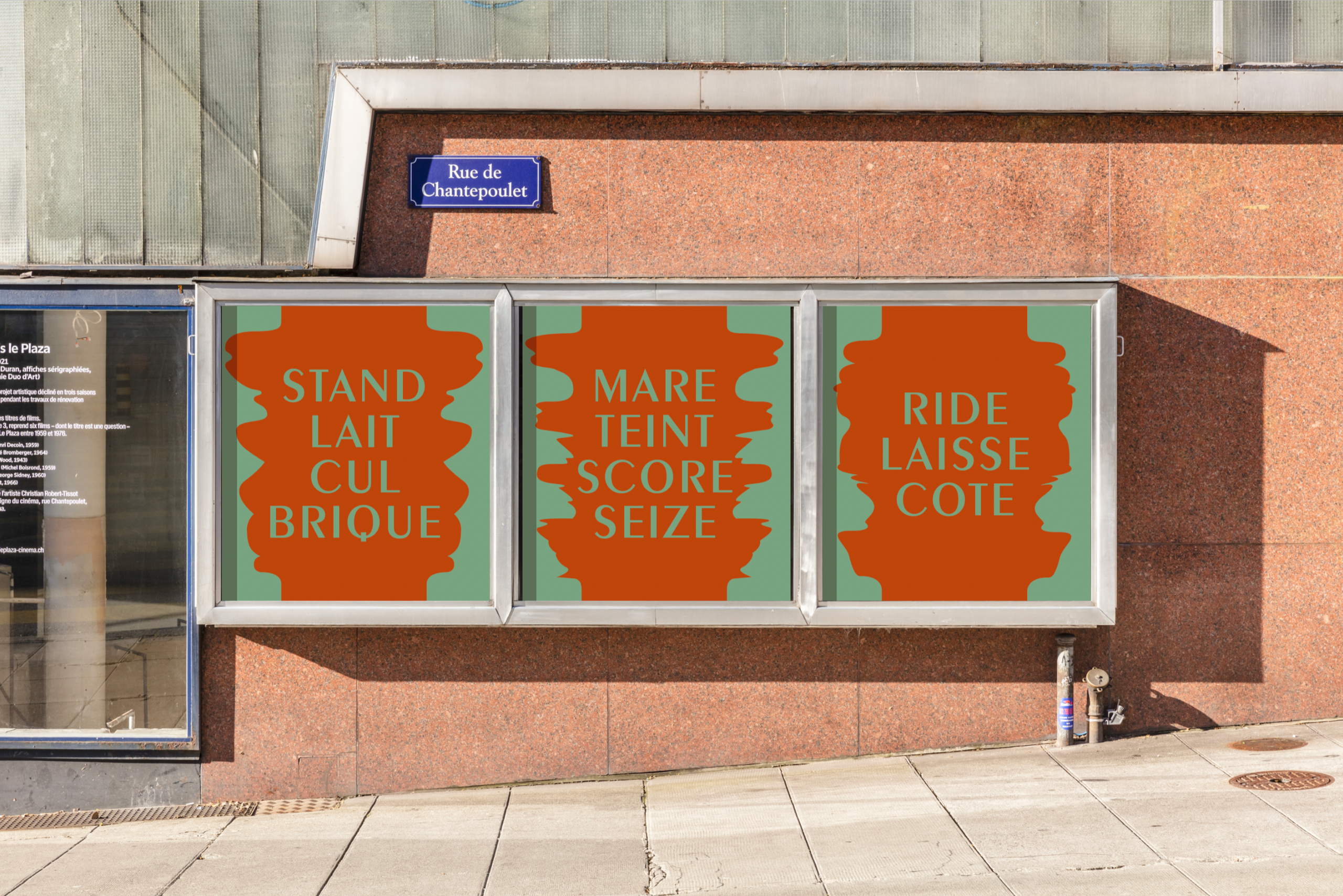
EPISODE 3 (Season 2)
Episode 3 features three filmmakers (two American and one English) whose films have become cult favorites.
STAND LAIT CUL BRIQUE (Stanley Kubrick)
MARE TEINT SCORE SEIZE (Martin Scorsese)
RIDE LAISSE COTE (Ridley Scott)
EPISODE 2 (Season 2)
Episode 2 features three actresses who, each in their own way, have become icons of American popular cinema.
HOUX MÂT TOUR MANNE (Uma Thurman)
JUS LIT ART AUBE HERTZ (Julia Roberts)
MÈRE ÎLE STRIE PEU (Meryl Streep)
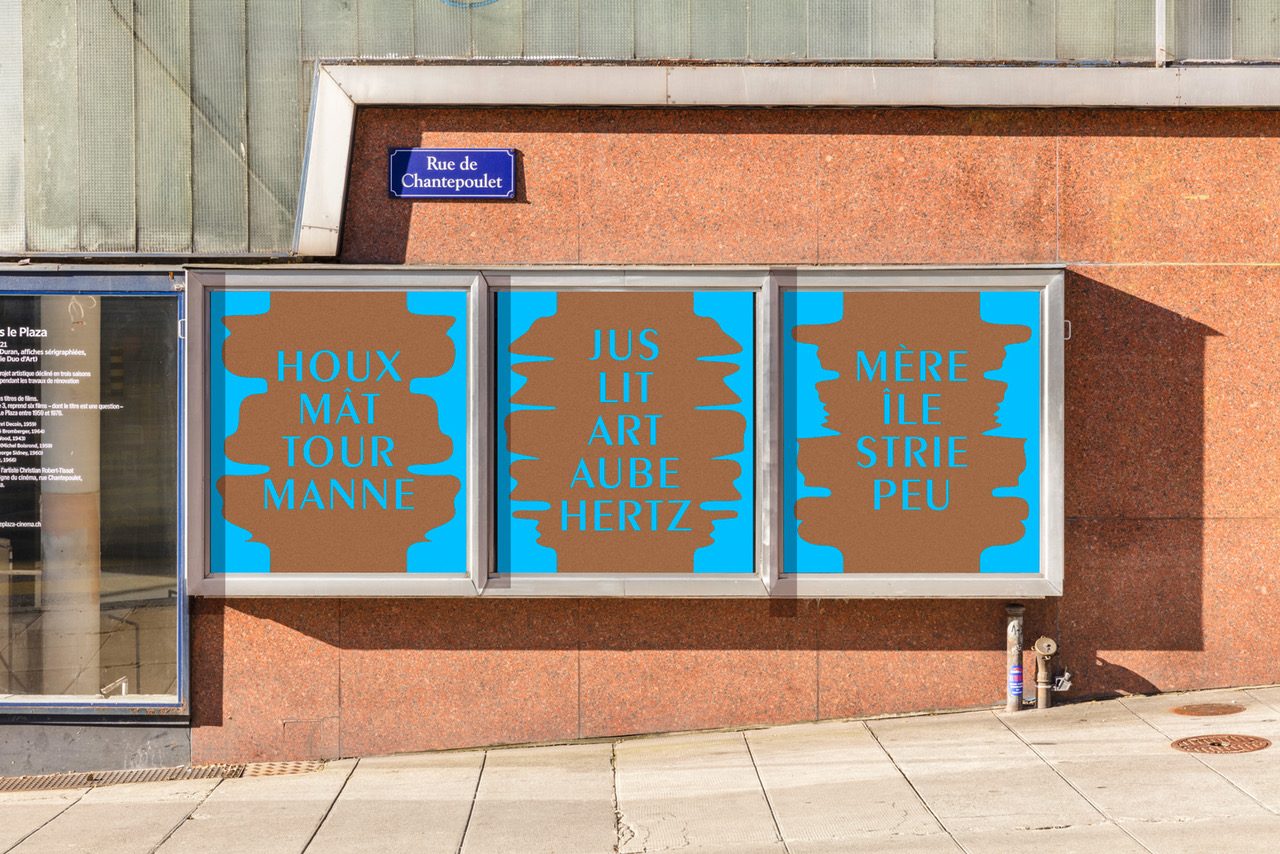
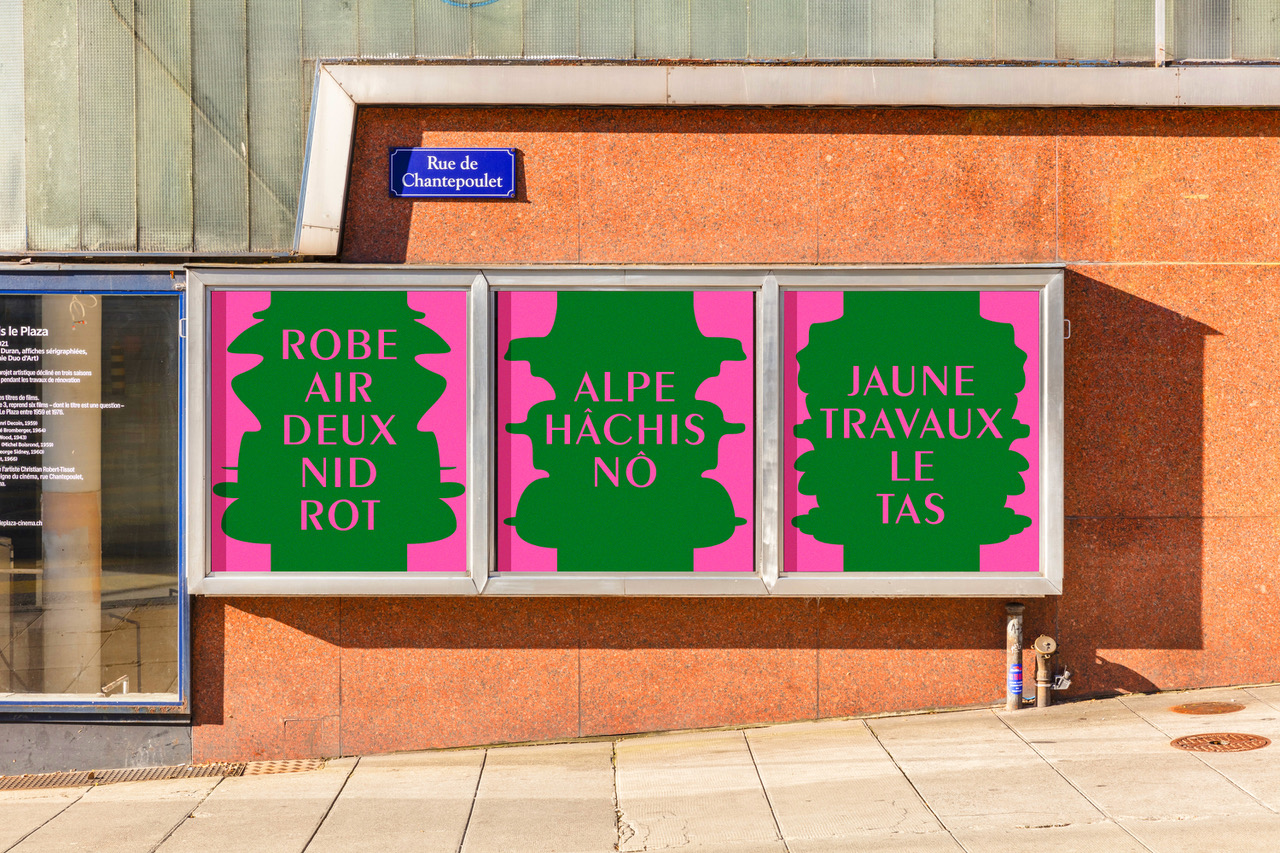
EPISODE 1 (Season 2)
Episode 2 features three actresses who, each in their own way, have become icons of American popular cinema.
ROBE AIR DEUX NID ROT (Robert de Niro)
ALPE HÂCHIS NÔ (Al Pacino)
JAUNE TRAVAUX LE TAS (John Travolta)
IL ÉTAIT UNE FOIS LE PLAZA
Season 1
In the first season, the artist Fabienne Radi and designer Clovis Duran played with the titles of the films shown at the Plaza and made 6 playful and colorful proposals.
EPISODE 5 (Season 1)
Once upon a time at the Plaza, episode 5, features seven films with color in their titles that were screened at the Plaza between 1956 and 1997.
La belle verte (Coline Serreau 1996)
Goupi mains rouges (Jacques Becker, 1943)
Orange mécanique (Stanley Kubrick, 1971) – original title A Clockwork Orange
La Panthère rose (Blake Edwards, 1963) – original title The Pink Panther
L’inquiétante Dame en noir (Richard Quine, 1962) – original title The Notorious Landlady
L’Ombre blanche (John Gray, 1996) – original title The Glimmer Man
L’Homme au bras d’or (Otto Preminger, 1955) – original title The Man with the Golden Arm
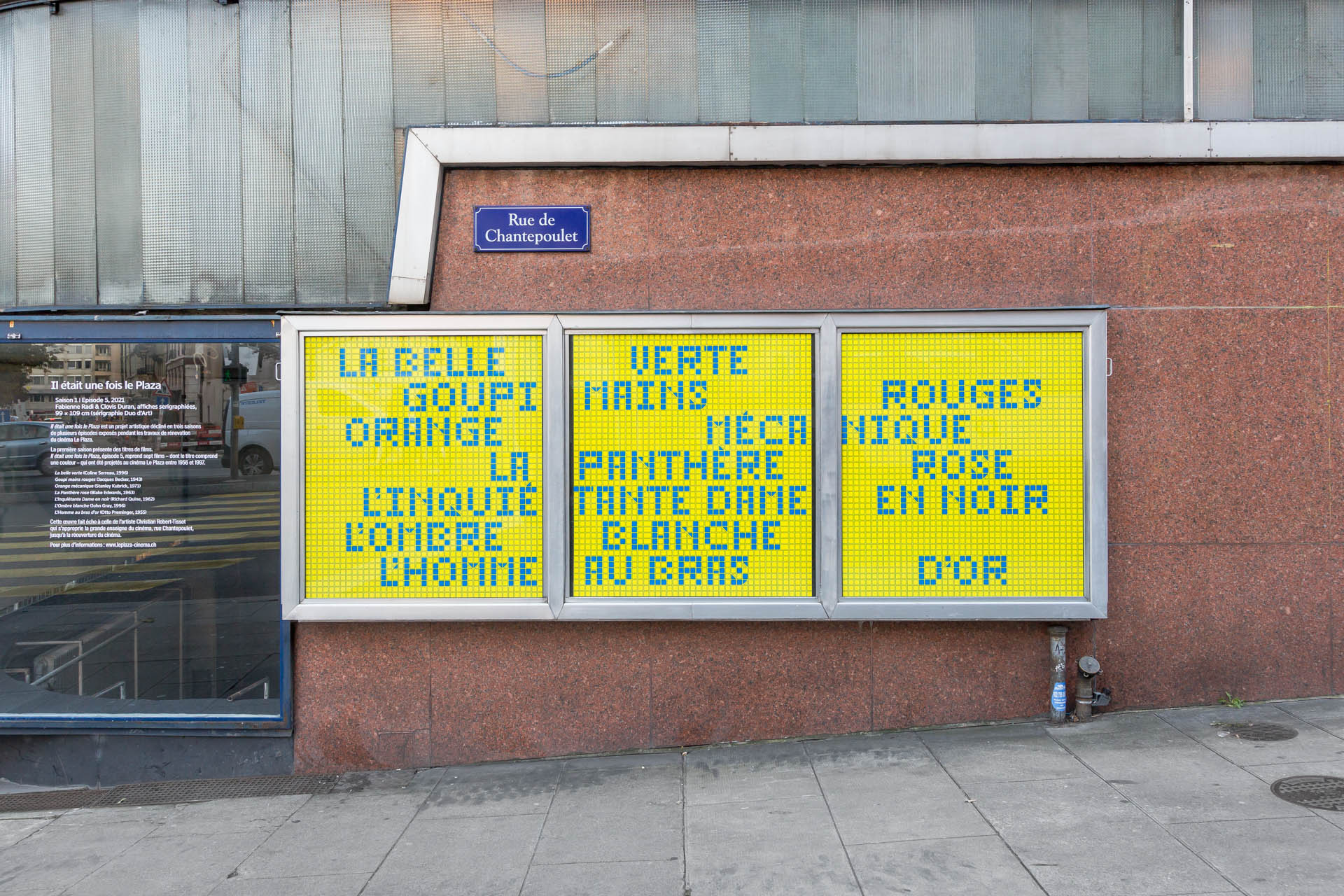
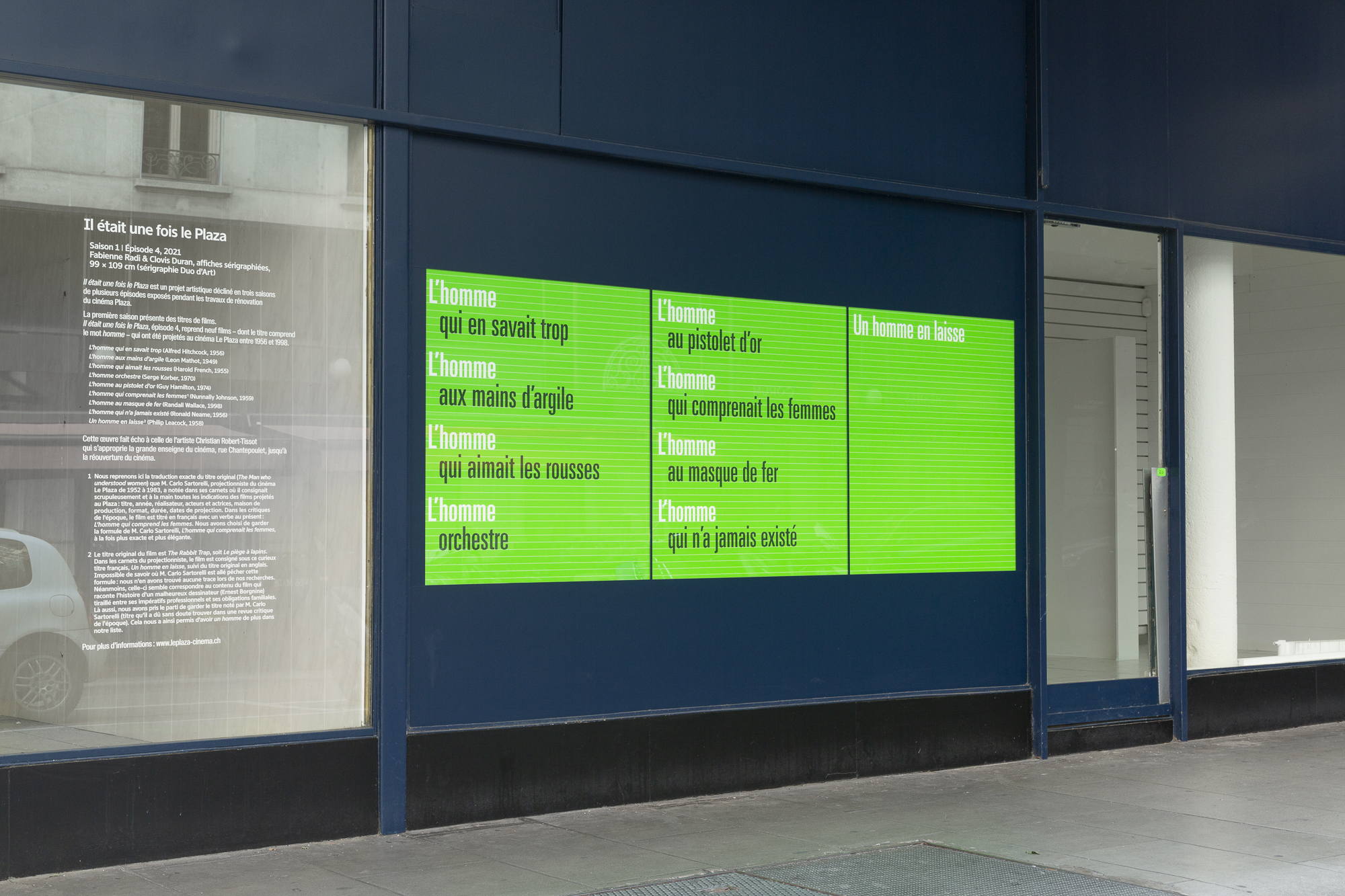
EPISODE 4 (Season 1)
Episode 4 features nine films whose titles in French include the word “L’homme” (that means the man) that were screened at the Plaza between 1956 and 1998.
L’homme qui en savait trop (Alfred Hitchcock, 1956) – original title The Man Who Knew Too Much
L’homme aux mains d’argile (Léon Mathot, 1949)
L’homme qui aimait les rousses (Harold French, 1955) – original title The Man Who Loved Redheads
L’homme orgchestre (Serge Korber, 1970)
L’homme au pistolet d’or (Guy Hamilton, 1974) – original title The Man with the Golden Gun
L’homme qui comprenait les femmes (1) (Nunnally Johnson, 1959)
L’homme au masque de fer (Randall Wallace, 1958) – original title The Man in the Iron Mask
L’homme qui n’a jamais existé (Ronald Neame, 1956) – original title The Man Who Never Was
Un homme en laisse (2) (Philip Leacock, 1958)
1-We reproduce here the exact translation of the original title (The Man who understood women) that Mr. Carlo Sartorelli, projectionist at the Plaza from 1952 to 1983, noted in his notebooks where he scrupulously recorded by hand all the indications of the films shown at the Plaza: title, year, director, actors and actresses, production company, format, duration, screening dates. In the reviews of the time, the film is titled in French with a present tense verb: The man who understands women. We have chosen to keep the formula of Mr. Sartorelli, The man who understood women, both more accurate and more elegant.
2-The original title of the film is The Rabbit Trap
In the projectionist’s notebooks, the film is recorded under the curious French title, Un homme en laisse, (A man on a leash) followed by the original English title. It is impossible to know where Mr. Sartorelli got this formula from: we found no trace of it during our research. Nevertheless, it seems to correspond to the content of the film, which tells the story of an unfortunate cartoonist (Ernest Borgnine) torn between his professional imperatives and his family obligations… Here again, we decided to keep the title noted by Mr. Sartorelli (a title that he probably found in a critical review of the time). This allowed us to have one more man in our list.
EPISODE 3 (Season 1)
Il était une fois le Plaza, episode 3, features six films whose title is a question – that were shown at the Le Plaza cinema between 1959 and 1976.
Pourquoi viens-tu si tard ? (Henri Decoin, 1959)
Mort, où est ta victoire ? (Hervé Bromberger, 1964)
Pour qui sonne le glas ? (Sam Wood, 1943) original title – For Whom the Bell Tolls
Voulez-vous danser avec moi ? (Michel Boisrond, 1959)
Qui était donc cette dame ? (George Sidney, 1960) original title – Who Was That Lady?
Paris brûle-t-il ? (René Clément, 1966)

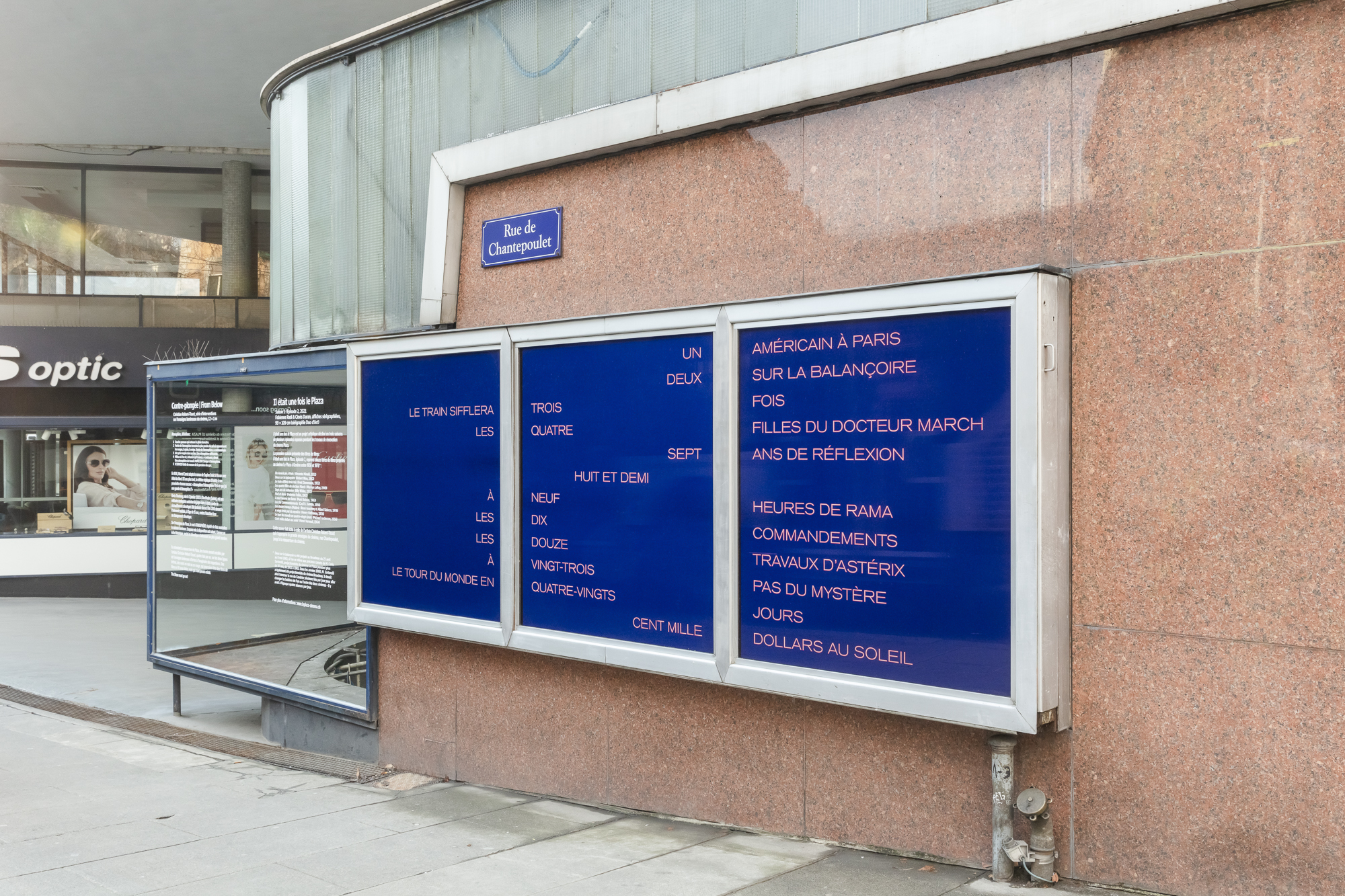
EPISODE 2 (Season 1)
Il était une fois le Plaza, episode 2, features twelve titles of films shown at the Plaza cinema in Geneva between 1956 and 1976*:
Un Américain à Paris (Vincente Minelli, 1951) original title – An American in Paris
Deux sur la balançoire* (Robert Wise, 1962) original title – Two for the Seesaw
Le train sifflera trois fois (Fred Zinnemann, 1952) original title – High Noon
Les quatre filles du docteur March (Mervyn LeRoy, 1949) original title – Little Women
Sept ans de réflexion (Billy Wilder, 1955) original title – The Seven Year Itch
Huit et demi (Federico Fellini, 1963) original title – Otto e mezzo
À neuf heures de Rama (Mark Robson, 1963) original title – Nine Hours to Rama
Les Dix Commandements (Cecil B. DeMille, 1956) original title – The Ten Commandments
Les douze travaux d’Astérix (René Goscinny et Albert Uderzo, 1976)
À vingt-trois pas du mystère (Henry Hathaway, 1956) original title – 23 Paces to Baker Street
Le tour du monde en quatre-vingts jours (Michael Anderson, 1956) original title – Around the World in 80 Days)
Cent mille dollars au soleil (Henri Verneuil, 1964)
* * Two for the Seesaw was shown at the Broadway Cinema from April 25 to May 8, 1963, according to the precious notebooks of Mr. Carlo Sartorelli, projectionist of the Plaza Cinema for more than 30 years. In the 1960s, Mr. Sartorelli was also a projectionist at the Broadway cinema. He had to cross the “rue du Cendrier” several times a day to change the reels of one or the other of the two theaters – at the time there were four showings a day.
EPISODE 1 (Season 1)
Season 1 is all about movie titles. The first episode features three film titles (French translation) by Italian director Sergio Leone, as well as a fourth fictional title, Il était une fois le Plaza (Once Upon a Time There was the Plaza).
Il était une fois dans l’Ouest – Original title C’era una volta il West
Il était une fois la révolution – Original title Giù la testa
Il était une fois en Amérique – Original title Once Upon a Time in America
Il était une fois Le Plaza
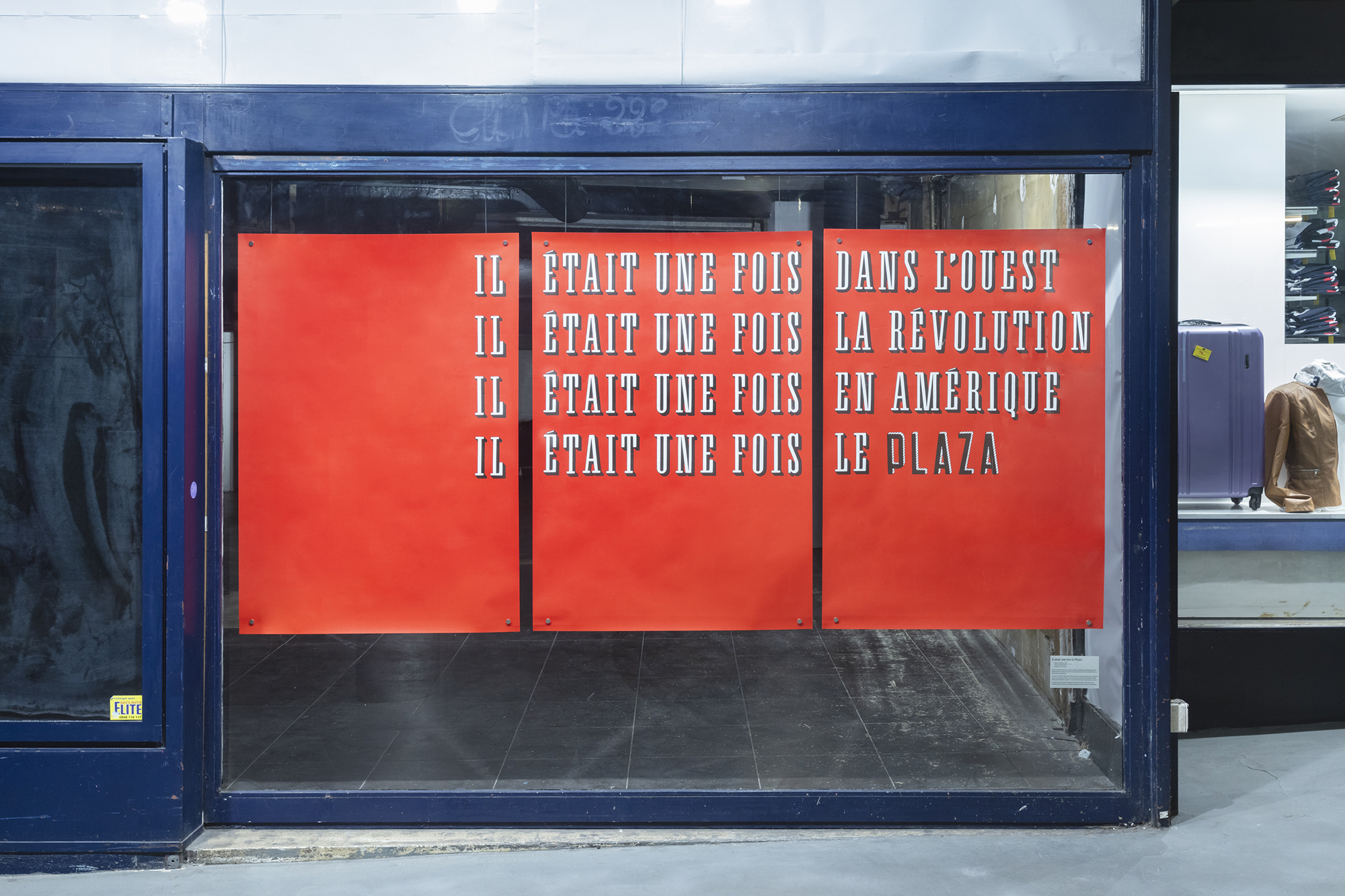
Fabienne Radi
Fabienne Radi writes (essays, fictions, poems), makes artist’s editions (books, posters, records) and teaches at HEAD – Genève, Geneva University of Art and Design, in visual arts. Her early training in geology brought her a love of layers, her brief foray into library science sparked an infatuation with filing, and her later studies in art transformed her view of everyday objects. Titles, folds, misunderstandings, haircuts, dentists and Paul Newman are recurring motifs in her work. She was born in Fribourg, lives in Geneva, and regularly visits Gruyère (biography of the artist by herself. More info on www.fabienneradi.ch)
Clovis Duran
Clovis Duran (*1987) is an independent graphic designer based in Geneva. A graduate of HEAD – Genève, Geneva University of Art and Design, he develops a graphic project that poses the relationships multiple/unique, same/disparate, generic/individual, in the production system of communication. He also deals with informative contents by mixing, for example, pre-printed structures and handwritten typographies. In 2012, he co-founded Rosa Brux (www.rosabrux.org), a research and exhibition space located in Brussels. He participated in its management and programming and signed its visual identity (2012-2021) precisely characterized by the possible games between mechanical gestures and manual interventions.
